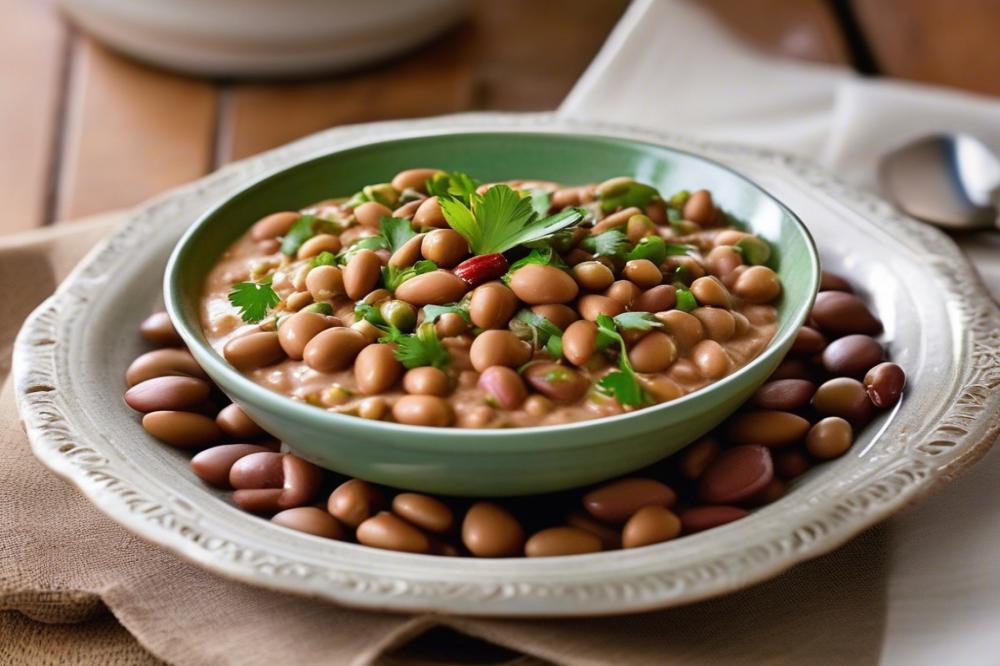Exploring the Flavors of Ful Medames Stewed Fava Beans
Ful Medames serves as a cornerstone of Egyptian cuisine, offering a hearty and nutritious option that many people enjoy for breakfast. Over time, this dish has become a staple in Middle Eastern food culture. It primarily features Stewed Fava Beans, which not only provide a satisfying flavor but also deliver essential plant-based protein. Its significance reaches beyond mere sustenance; it encapsulates a sense of community and tradition within Egyptian society.
Many families cherish traditional recipes handed down through generations. Each household may have its own twist on how to prepare this dish, showcasing the rich tapestry of cultural heritage in Egypt. Spices and herbs play a crucial role, allowing for variations that celebrate local ingredients. Such diversity makes Ful Medames a unique experience for anyone who tries it.
This flavorful legume dish holds a special place in the Mediterranean diet, promoting healthy eating habits. It embodies the essence of vegetarian meals, showcasing how satisfying and nutritious plant-based foods can be. Ful Medames is not just a breakfast food; it can be enjoyed any time of day, further solidifying its status in various culinary circles. The benefits of incorporating legumes like fava beans in daily meals are well-recognized, making this dish a smart choice for health-conscious individuals.
In summary, stewed fava beans reflect a blend of health and tradition. The dish touches on aspects of community and resilience, linking people to their past and their land. As more individuals explore Mediterranean diet practices, Ful Medames continues to stand out as a vibrant symbol of Egyptian culinary pride.
The Essence of Ful Medames
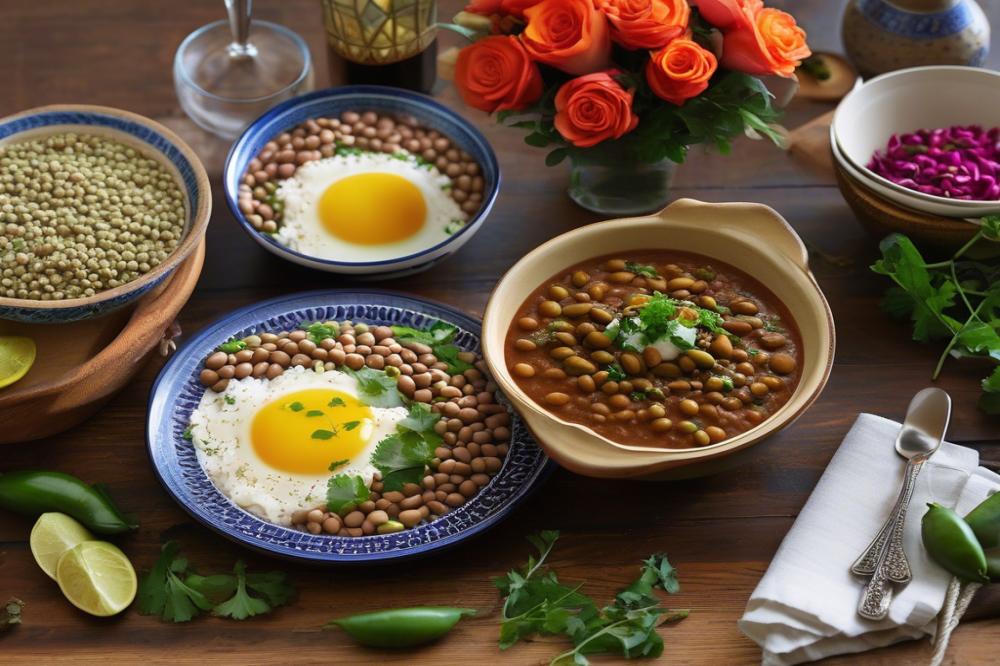
Stewed fava beans are a dish rich in flavors and traditions. This meal offers a warm and hearty experience loved by many. Its unique blend of spices, garlic, and olive oil create a savory taste. The texture is creamy yet hearty, making it perfect for breakfast or any time of the day. Many enjoy it topped with fresh vegetables like tomatoes or onions. Lemons provide a zesty contrast, enhancing the overall flavor profile.
In Egyptian cuisine, this dish has a special place. It is considered a staple in many households across the Middle East. Served in markets and homes alike, this dish connects people to their cultural heritage. Traditionally, it accompanies pita bread, making it a complete meal. As a popular breakfast food, families often gather to share this comforting dish. Its nutritional benefits also make it a favorite among those seeking healthy recipes. Packed with plant-based protein, it serves as a great option for vegetarian meals.
Each region has its own twist on fava bean dishes. In Egypt, the preparation typically includes cumin and chili, giving it a distinctive flavor. Meanwhile, other Middle Eastern countries may add different spices or ingredients. Variations might include tahini or olive oil for added richness. Regions can influence the presentation and sides served with the dish. This variety allows for endless experimentation, fitting well into the Mediterranean diet.
Legume dishes like this contribute to a balanced diet. They offer a hearty meal that is also gentle on the wallet. Some cultures consider it a traditional recipe, passed through generations. Many appreciate the simplicity and depth of flavor it provides. As more people explore healthy eating, this dish aligns perfectly with those goals. Recipes can easily adapt to different tastes, making it perfect for gatherings.
Ingredients List and Method
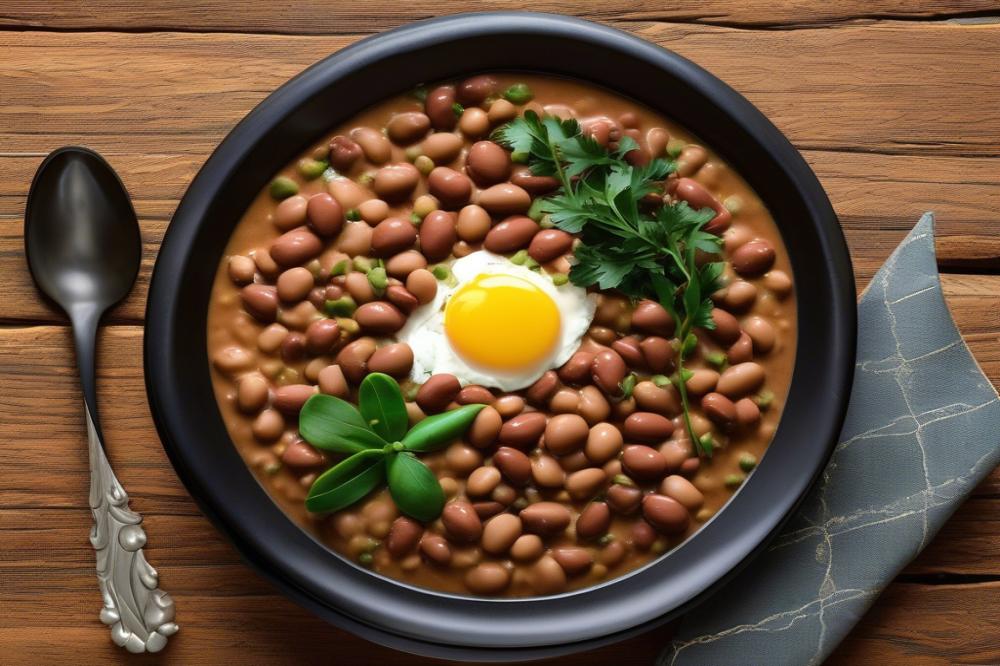
Exploring the flavors of stewed fava beans requires a well-thought-out ingredients list. Here’s what you’ll need:
- 2 cups dried fava beans
- 4 cups water (for soaking)
- 3 cups water (for cooking)
- 1 tablespoon olive oil
- 2 cloves garlic, minced
- 1 teaspoon cumin
- Salt to taste
- Red pepper flakes (optional)
- Fresh lemon juice (from 1 lemon)
- Chopped parsley for garnish
Each ingredient contributes to the traditional recipe’s rich taste. Fava beans provide a hearty plant-based protein that is vital in Egyptian cuisine. Olive oil adds healthy fats to this Mediterranean diet staple. Garlic not only enhances flavor but also brings health benefits commonly found in Middle Eastern food.
Nutritional Information
Nutritional information varies by ingredient. Fava beans are a significant source of dietary fiber, which is crucial for digestion. Olive oil is known for heart health. Garlic offers antioxidants while cumin can help with digestion. Overall, this dish is packed with nutrients vital for anyone seeking healthy recipes and vegetarian meals.
Detailed Cooking Instructions
First, soak the fava beans overnight in water. This step softens them and makes cooking easier. After that, cook the soaked beans in fresh water until they are tender. This usually takes about an hour.
Next, heat olive oil in a skillet. Sauté minced garlic in the oil until golden brown. This step is essential, as it adds aroma and depth of flavor to the dish. Pour this garlic mixture into the pot with the beans.
Stir in cumin, salt, and red pepper flakes if you prefer some spice. Adjust the seasoning according to your taste. At this stage, you can decide whether to mash the beans or leave them whole, depending on your preference. Consider the texture that suits your meal best.
Finally, serve your dish with a splash of fresh lemon juice and a generous sprinkle of chopped parsley. Enjoy this hearty breakfast food from Egyptian cuisine, perfect for any time of day. This legume dish embraces cultural heritage and offers a variety of flavors in every bite.
Nutritional Benefits of Ful Medames
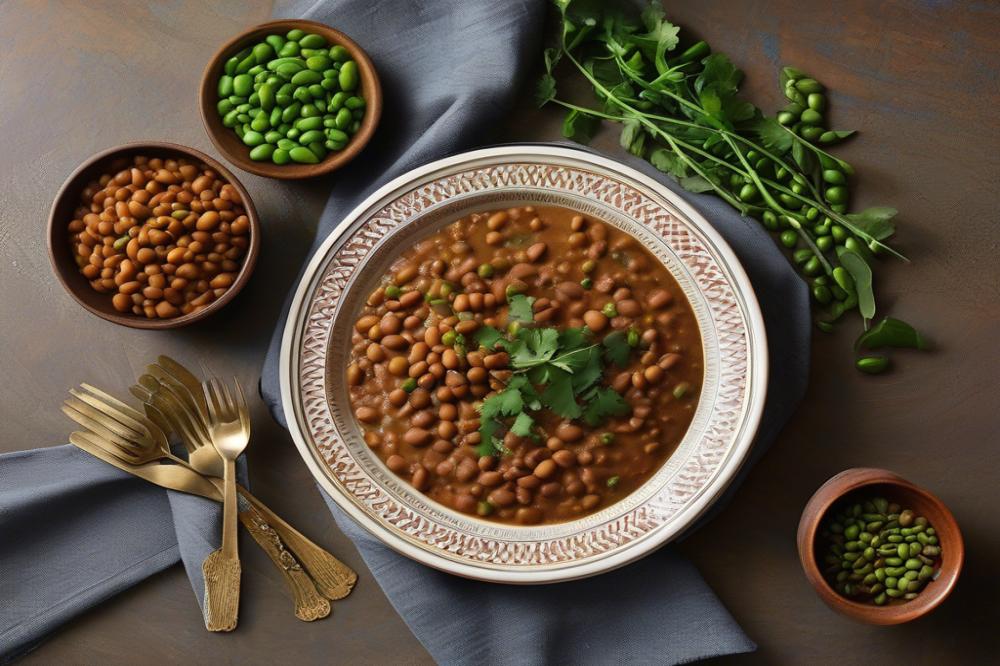
Fava beans are rich in plant-based protein and dietary fiber. Eating these beans can support muscle health and improve digestion. Middle Eastern food often embraces legumes for their numerous benefits. Ful medames is a great source of nutrients that can fit into many healthy recipes.
Health advantages are strongly associated with fava beans. They can help lower cholesterol levels and maintain heart health. Packed with vitamins and minerals, these beans contribute to overall wellness. Regularly including them in your meals aligns well with a Mediterranean diet.
In comparison to other legume dishes, fava beans hold their ground due to their high nutrient density. Chickpeas and lentils also provide similar benefits, yet each legume offers a distinctive taste and texture. Traditional recipes often highlight how versatile beans can be in various cuisines.
This dish is suitable for breakfast foods and any meal of the day. Vegetarian meals often lack protein, but incorporating these beans fills that gap effectively. Their rich flavor makes them a favorite among fans of Egyptian cuisine. People seeking nutritious options will find fava beans an excellent choice.
As part of the cultural heritage in the Middle East, this dish reflects the history of using simple ingredients to create healthy meals. Beans are not only economical but also sustainable. They enhance the quality of diets without sacrificing taste. Choosing fava beans enriches the dining experience while promoting health.
Serving Suggestions and Pairings
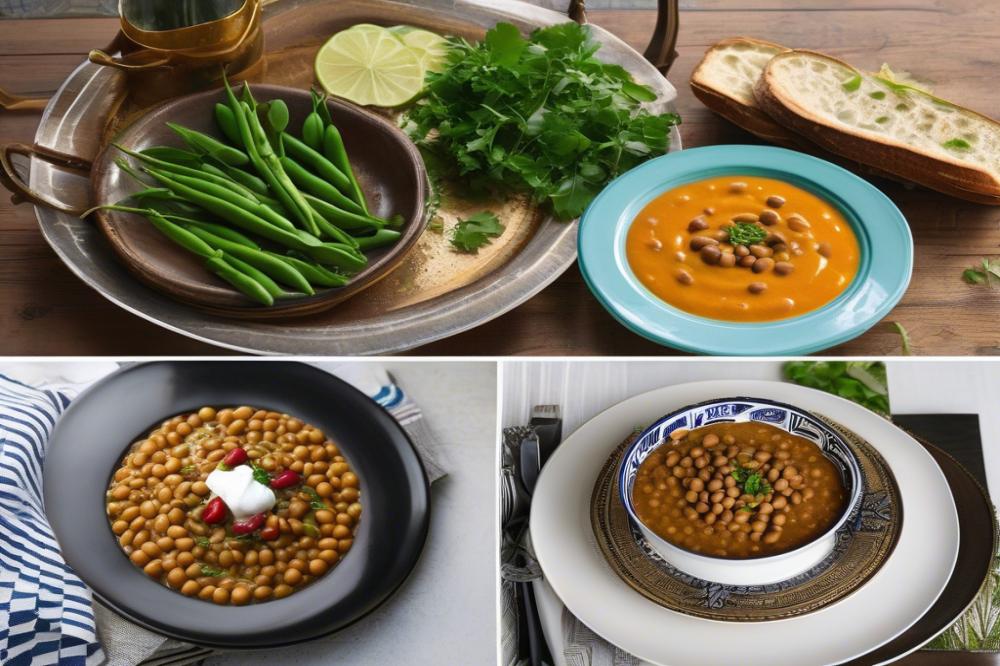
Traditional Side Dishes with Ful Medames
Egyptian cuisine offers various side dishes that complement stewed fava beans beautifully. Pita bread often serves as a classic vehicle. Fresh, warm bread makes every bite more delightful. Additionally, rice dishes can be served alongside for a hearty meal. Many enjoy pairing this dish with a simple salad. The crunch of fresh vegetables adds texture and brightness. Dishes made from eggplant or pickled vegetables also enhance the experience. These options reflect the flavors of the region and enrich the dining scene.
Popular Toppings and Sauces in Egyptian Cuisine
Toppings play a crucial role in elevating the flavor of fava beans. A combination of chopped parsley, onions, and tomatoes often appears. This topping adds freshness and color. Additionally, a drizzle of olive oil brings richness. You might find chili sauce or tahini on the side as well. These sauces add depth and enhance the overall flavor profile. Traditional recipes sometimes include hard-boiled eggs for extra protein. Each addition showcases the diverse elements of Middle Eastern food.
How Ful Medames Fits into a Mediterranean Diet
This dish embodies the essence of a Mediterranean diet. Plant-based protein is a key component alongside healthy fats. Whole ingredients, like garlic and lemon juice, boost nutrition. Such meals help maintain a balanced intake. Fava beans are not just tasty; they help promote heart health. Their fiber content supports digestion, making them excellent choices. Eating legume dishes regularly can align with a nutritious lifestyle. This way, people can enjoy traditional recipes while staying mindful of health.
Best Practices for Enjoying as a Breakfast Food
Many consider this a delightful breakfast option. Served warm, it provides a comforting start to the day. Pairing with a refreshing beverage, like mint tea, is common. Some love adding a touch of chili to spark the flavors. Enjoying this meal can be a social affair. Sharing it with friends or family enhances the experience. Remember that presentation matters. A colorful plate with contrasting ingredients makes every meal more appealing. Eating breakfast foods that are wholesome nourishes both body and spirit.
Cultural Significance and Modern Adaptations
Historical Background of Ful Medames in Egypt
Ful Medames has deep roots in Egyptian culture. Fava beans have been cultivated along the Nile for thousands of years. This dish was popular among the ancient Egyptians, often served as a staple for common people. Over time, these beans evolved from simple street food to a beloved breakfast choice. Families would gather around the table to enjoy it, creating cherished memories. Traditionally, it is seasoned with olive oil, garlic, and lemon juice. This reflects the rich flavors of Egyptian cuisine which emphasize fresh ingredients and bold tastes.
Current Popularity and Adaptations in Modern Recipes
In today’s world, Ful Medames enjoys a boost in popularity, especially among food enthusiasts. Chefs and home cooks are reimagining this classic dish. Many modern recipes include creative toppings like avocados, poached eggs, and spicy sauces. These adaptations cater to diverse tastes while keeping the essence of the original dish. Some people enjoy it as a quick breakfast, while others find it a satisfying lunch option. The plant-based protein content makes it appealing for health-conscious consumers seeking nutritious meals. Vegetarians often appreciate the wholesome nature of this legume dish.
Ful Medames in the Context of Global Vegetarian Cuisine
This hearty dish fits neatly into the Mediterranean diet, praised for its health benefits. As vegetarian meals gain traction worldwide, Ful Medames stands out among legume dishes. Influences from Middle Eastern food have made the dish popular beyond Egypt. Many food cultures now embrace it, often adding personal twists. As plant-based diets grow in prominence, this classic recipe continues to shine. Its adaptability makes it easy to incorporate into healthy recipes that suit various tastes. By embracing this cultural heritage, people can discover a fulfilling way to enjoy traditional flavors in their everyday meals.
Final Thoughts on Ful Medames
Ful Medames holds a special place in Egyptian cuisine. This dish is more than just food; it is a cultural staple that has nourished generations. Often served for breakfast, it reflects the heart of Middle Eastern dining traditions. Bold flavors and hearty textures make it a beloved choice for many. Even outside of Egypt, its popularity continues to grow.
Incorporating this stewed fava bean dish into daily meals opens the door to a variety of healthy recipes. The protein-rich beans can be combined with vegetables, herbs, and spices to create different meals. Eating Ful Medames can be both an enjoyable and nutritious experience. It can be easily adjusted to suit individual tastes without losing its authentic appeal.
People should definitely take the time to explore this traditional dish. Different regions prepare it in various ways, each offering unique twists on flavor. This diversity makes the experience of tasting Ful Medames even more exciting. Whether enjoyed at a local café or made at home, it remains a fulfilling option for any meal.
Ultimately, diving into this culinary gem will foster a deeper appreciation for Middle Eastern food. It invites everyone to discover new flavors while celebrating a rich heritage. So, gather your ingredients and enjoy the comforting warmth of this stewed fava bean delight.

